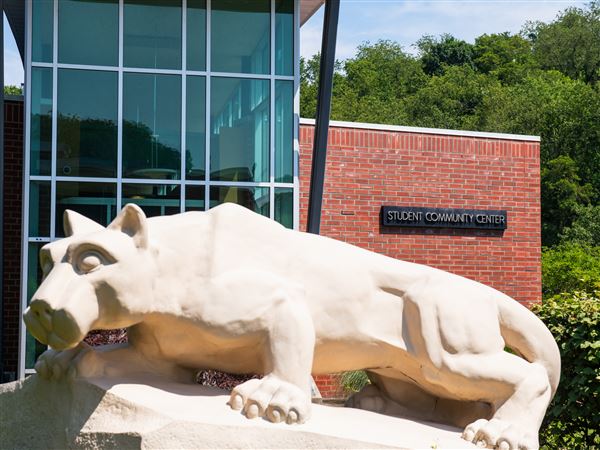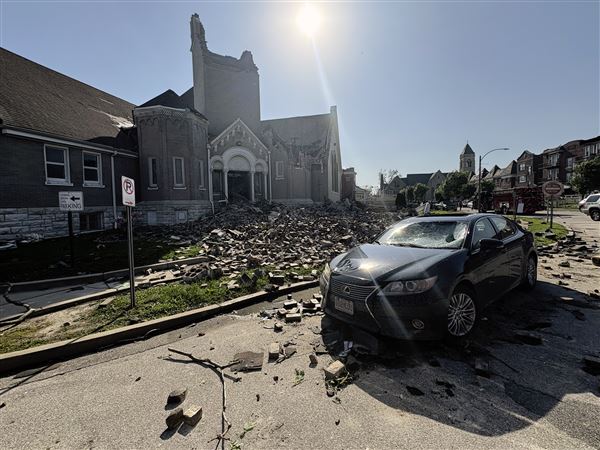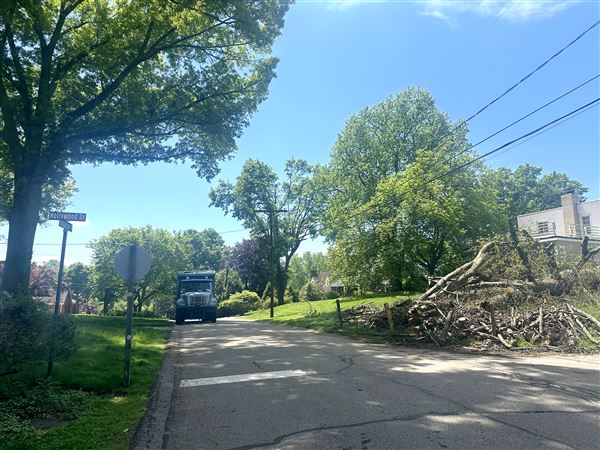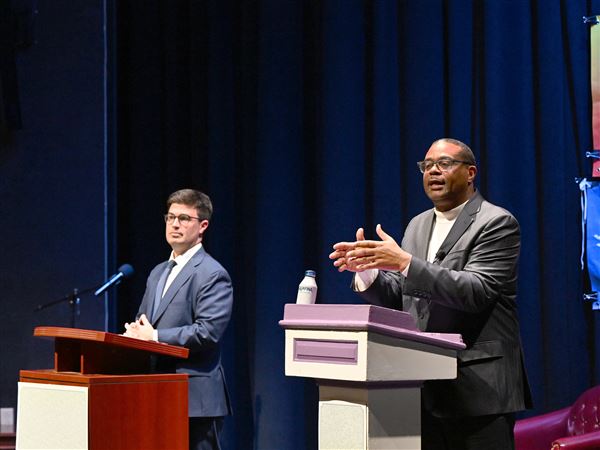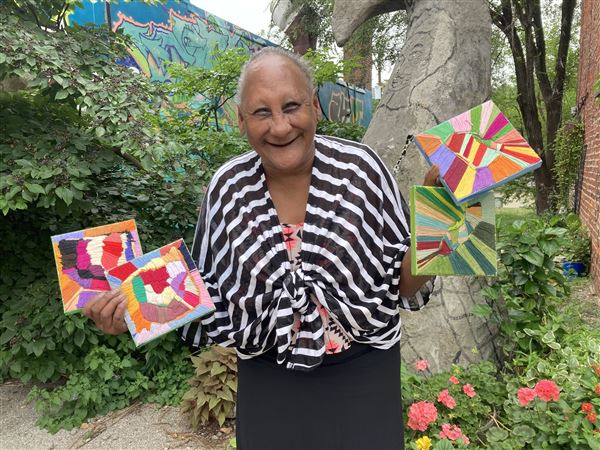Twenty-eight people fidget at the beginning of the immersion course. Although the teacher won't speak English to them, they understand the first direction immediately, "Come forward," to the front two rows of the auditorium. After that it gets harder, and because the room is silent, the sound of discovery whispers audibly through the room: "oohh ... She means 'paper.' "
A front-row student responds with the hand gesture for "OK." She obviously has prior knowledge of American Sign Language.
For decades, the Western Pennsylvania School for the Deaf has offered community classes in ASL. But the first class taught by Mainstream and ASL coordinator Mary Ann Stefko nearly 20 years ago had only 12 people, many of whom didn't continue through the course.
The school's six-week introductory course this winter contains 57 students, all hearing, and was split into two to accommodate them all. Now the school offers three classes of ASL, Levels I, II and III, three times a year, and sometimes extra courses for more advanced students. Ms. Stefko no longer teaches, leaving that to four expert instructors, all deaf.
Christie Homell, an introductory teacher, illustrates the alphabet and then calls students up to introduce themselves by "finger spelling" their names.
"R," signs a man in glasses with a smile on his face. He follows with a proficient "O" and "Y."
Roy Benham is quick because he gets daily practice signing. The Plum resident adopted a 21/2-year-old profoundly deaf child in July and communicates solely in ASL at home with his wife, who teaches sign language, and his daughter, who is learning words along with him.
Historically, students taking sign language have been people like Mr. Benham, eager to be able to speak to their loved ones. But students packing the rows now include those learning ASL for work or play -- teachers, therapists, business people.
The Americans With Disabilities Act and the disability rights movement did much to create interest in ASL, but Pennsylvania legislators played an important part in the attention on ASL locally.
Legislation enacted last year requires that ASL interpreters be certified, sending many back to school to prepare for the exams. And in 2002, the Pennsylvania legislature decreed ASL a foreign language, an equivalent to French or Spanish, able to fill foreign language requirements for schools.
So far, no local high schools offer ASL classes, although both Woodland Hills and North Hills districts have sponsored ASL clubs.
For Elyse Corcoran, a 17-year-old with hair dyed "Funky Cherry Red," to study sign, she must commute from Brentwood to the School for the Deaf in Edgewood.
Ms. Corcoran became interested in sign language when traveling with a friend whose mother is deaf. Now she hopes to learn ASL and teach art to deaf students.
"It's amazing to be able to talk with just your hands and expressions," she said.
While high school curricula may lag, national reports show ASL second only to Spanish in popularity as a college foreign language. Pittsburgh college students can take ASL for credit at the University of Pittsburgh, Carnegie Mellon University and Community College of Allegheny County.
Practitioners say that ASL fulfills the important foreign language requirement of introducing students to another culture.
"It's a whole new world, the way the deaf communicate and interact with each other," said Mr. Benham enthusiastically.
The difference for Ms. Corcoran, she said, is that this is a culture closer to home, and therefore a more useful language.
"When are you going to run into someone who speaks French?" she asked.
Besides, added Ms. Corcoran's father, Jim, those French and Spanish speakers who move to Western Pennsylvania generally become speakers of English as a second language. Deaf people can't do that.
Mary Beth Koontz, a Level III student who has been studying ASL for four years, has already found herself interpreting for a deaf person to order at a fast-food restaurant.
"It's changed my life," she said, of her new skill. "I've become aware of something different. You start seeing all these people who are signing. They were there before, but you didn't see it."
A teacher at Word of God Catholic School in Swissvale, Ms. Koontz started to learn sign language in order to work with students from the School for the Deaf receiving mainstream schooling in her classroom.
Now she signs to her students the psalms she reads throughout the day at school, and hearing students from Word of God are eager to learn ASL from School for the Deaf students.
That can only make Western Pennsylvania a better place for deaf people, says Ms. Stefko. School staff teaches deaf students that throughout life most people won't be able to communicate in sign, "These [ASL students] will be meeting them halfway," she said. "It's so that at a Steelers' rally, when you're next to a deaf person, you can sign, "Go Steelers."
While "Go Steelers," may come easily, ASL won't necessarily. As with all foreign languages, the more time spent signing, the quicker fluency comes.
That's one reason all the teachers at the school are deaf -- no cheating. "You need to sign to get along," said Ms. Stefko.
The intro class ends with a pop quiz on finger spelling. Ms. Homell signs the letters as students spell out the words on their papers -- papers that look like a "Wheel of Fortune" sign board early on in the game, with only some letters filled in.
Finger spelling is the basic building block of sign; once students can learn to finger spell, they can start to learn more complicated words -- "label" "habit" "obey" -- by seeing them spelled first.
"We start with simple basic sentence structures, and build," said veteran teacher Kathy Betz. "You have to teach facial gestures, nouns and verbs as well as directionality."
For example, in ASL, signing "I call you," requires a gesture that starts with the person signing and goes toward the person watching. For "You call me" the sign is reversed.
Memorizing signs and translating quickly are difficult, but one of the most difficult parts of learning ASL for hearing people may be watching hard enough to take in the information. People are accustomed to hearing quickly, but not seeing quickly, ASL teachers say.
"When I'm signing, people turn to hear," explained Ms. Betz. "But I need your eyes."
First Published: February 23, 2006, 5:00 a.m.
